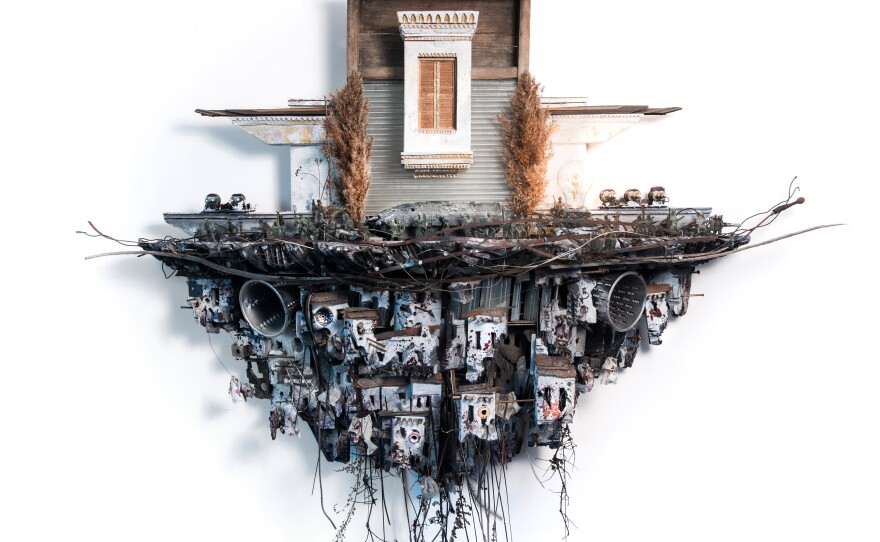Think of them like magic portals: tiny architectural models transporting you directly onto Syria's streets and forcing you to look at the bombed-out buildings and homes hit by the worst of that country's civil war.
"The more realistic the model is, the more engaged your viewer is," said MohamadHafez, a Syrian-born architect raised in Saudi Arabia and educated in the U.S.
Hafez describes his work as "remodeling the destruction" of his homeland's civil war -- channeling all the despair, and hope, he sees embedded in that conflict.
"To make such work, to make it look believable and realistic, I have to immerse myself in what's going on back home," said Hafez. "Sometimes I collapse, looking at what I've created."
In one piece, "His Royal Highness II" (pictured above) a palatial building sits directly atop a bombed out village -- two slices of living in war-torn Syria that Hafez bisects with a layer of dirt and rotted roots.
Hafez said the architectural contrast illustrates how a dictatorship uses its force to sustain its power. "It is dark. There is nothing happy about a civil war or seeing destruction of your own nation," he said. "However, the work imbues ... sort of a subtle hope and a brighter future for the generations to come."

It's something Hafez accomplishes through inspiring verses from the Qu'ran, which are rebelliously embedded in the streetscapes as colorful graffiti.
"You know, I cannot be there on [the] ground to give my condolences and my support in person," said Hafez. "But I can make a piece that shows so much destruction and graffiti on one of the walls, a very simple phrase that gives them hope."
The exhibition, entitled "Unsettled Nostalgia," is on view at The Harts Gallery at 20 Bank Street in New Milford until February 27.







